
Table of Contents
Scientific Classification
- Kingdom: Animalia
- Phylum: Chordata
- Class: Reptilia
- Order: Squamata
- Family: Diplodactylidae
- Genus: Rhacodactylus
- Species: Rhacodactylus auriculatus
Quick Overview
The Gargoyle Gecko (Rhacodactylus auriculatus), also known as the New Caledonian bumpy gecko, is a unique and captivating species of gecko native to the islands of New Caledonia in the southwestern Pacific. Named for its distinctive appearance, these geckos have gained popularity in the exotic pet trade due to their fascinating features and relatively easy care.
Fast Facts
- Scientific Name: Rhacodactylus auriculatus
- Lifespan: Approximately 15-20 years or more in captivity.
- Average Size: Adults typically reach a length of 7-9 inches, including their prehensile tail.
- Diet: Omnivorous, with a preference for fruit, nectar, and insects.
- Habitat: Arboreal, found in tropical rainforests and forested areas.
Did you know?
Gargoyle Geckos are named for the raised, bumpy texture on their skin, which gives them a unique and mythical appearance resembling the gargoyles found on old buildings.
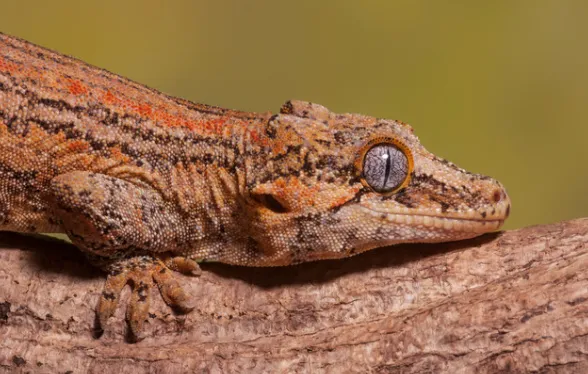
Appearance
Gargoyle Geckos are known for their visually striking and unique appearance. Their skin is covered in raised tubercles and bumps, giving them a texture that resembles tree bark. They come in various colors and patterns, making them highly sought after in the pet trade. Their eyes are large and expressive, with vertical pupils and excellent night vision.
Size and Weight
These geckos are relatively small, with adults typically measuring between 7 to 9 inches in total length, including their prehensile tails. They are lightweight, with an average weight ranging from 35 to 50 grams.
Temperament and Behavior
Gargoyle Geckos are known for their docile and gentle nature, making them excellent pets for reptile enthusiasts. They are generally less flighty than some other gecko species and can tolerate handling when done with care. These geckos are primarily arboreal, meaning they spend most of their time in trees and bushes.
Fun Fact
Gargoyle Geckos are capable of regenerating lost tails, a common defense mechanism among many gecko species. This ability allows them to escape from predators by leaving a piece of their tail behind while making a hasty retreat.
Habitat and Distribution
Gargoyle Geckos are endemic to the islands of New Caledonia in the southwestern Pacific. They inhabit tropical rainforests and forested areas in the wild, where they spend their time climbing trees and foraging for
Care Guide
For prospective Gargoyle Gecko owners:
- Habitat: Provide a vertically oriented enclosure with branches and hiding spots for climbing and perching.
- Temperature: Maintain a temperature range between 75-80°F (24-27°C) during the day and a slight drop at night.
- Humidity: Keep the humidity level around 50-70% to replicate their natural habitat.
- Diet: Feed your Gargoyle Gecko a varied diet consisting of fruit, nectar, and insects. Commercially available crested gecko diets can also be suitable.
- Health Check-ups: Regular veterinary check-ups are essential to monitor your gecko’s health.
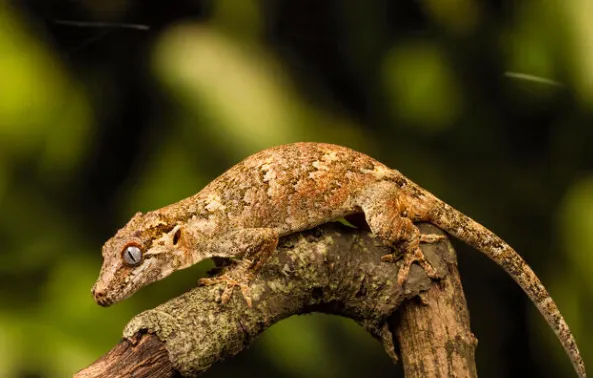
Diet and Nutrition
Gargoyle Geckos are omnivorous, with a preference for fruit, nectar, and insects in the wild. In captivity, they can be fed commercial crested gecko diets along with occasional insect feedings to ensure they receive a balanced and nutritious diet.
Health and Wellness
Maintaining a suitable habitat, monitoring temperature and humidity, and arranging for routine veterinary check-ups are crucial for the overall health and well-being of your Gargoyle Gecko.
Reproduction
Breeding Gargoyle Geckos is a common practice among reptile enthusiasts. These geckos lay one or two eggs at a time and typically breed during the warmer months. The eggs are usually buried in a moist substrate and incubated until they hatch.
Conservation Status
Gargoyle Geckos are not considered endangered or threatened. However, their populations in the wild may face habitat loss and degradation due to deforestation in some regions. Captive breeding programs have helped ensure their availability in the pet trade while supporting their conservation in the wild.
Photo Gallery
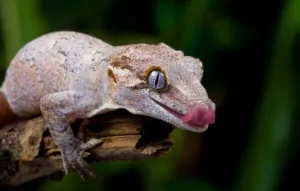
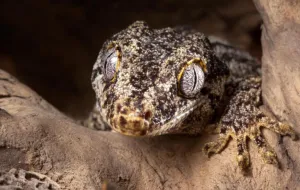
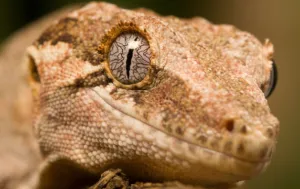
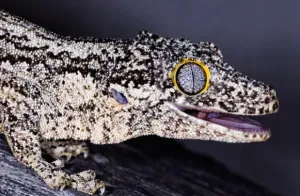
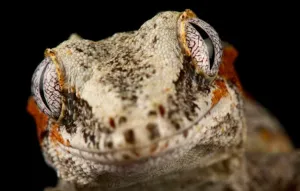
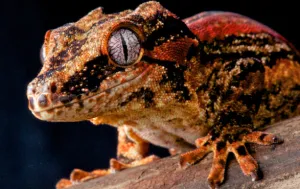
Check out the cute video of a Gargoyle Gecko:
Related Profiles
Share This Profile
3 Amazing Facts About Gargoyle Geckos
- Prehensile Tail: Gargoyle Geckos have a prehensile tail, which means they can use it for grasping and climbing. This helps them navigate through their arboreal habitats with ease.
- Vocal Communication: While not as noisy as some other gecko species, Gargoyle Geckos are known to make soft chirping or barking sounds, especially during interactions or territorial disputes with other geckos.
- Shedding Skin: Like many reptiles, Gargoyle Geckos periodically shed their skin to allow for growth. During the shedding process, they may eat their old skin, which provides additional nutrients.
- Enchi Ball Python: A Unique and Stunning Morph of Python regius - March 27, 2025
- Emerald Tree Monitor: The Enigmatic Green Guardian of the Rainforest - March 26, 2025
- The Egyptian Cobra (Naja haje): A Fascinating Serpent - March 25, 2025
